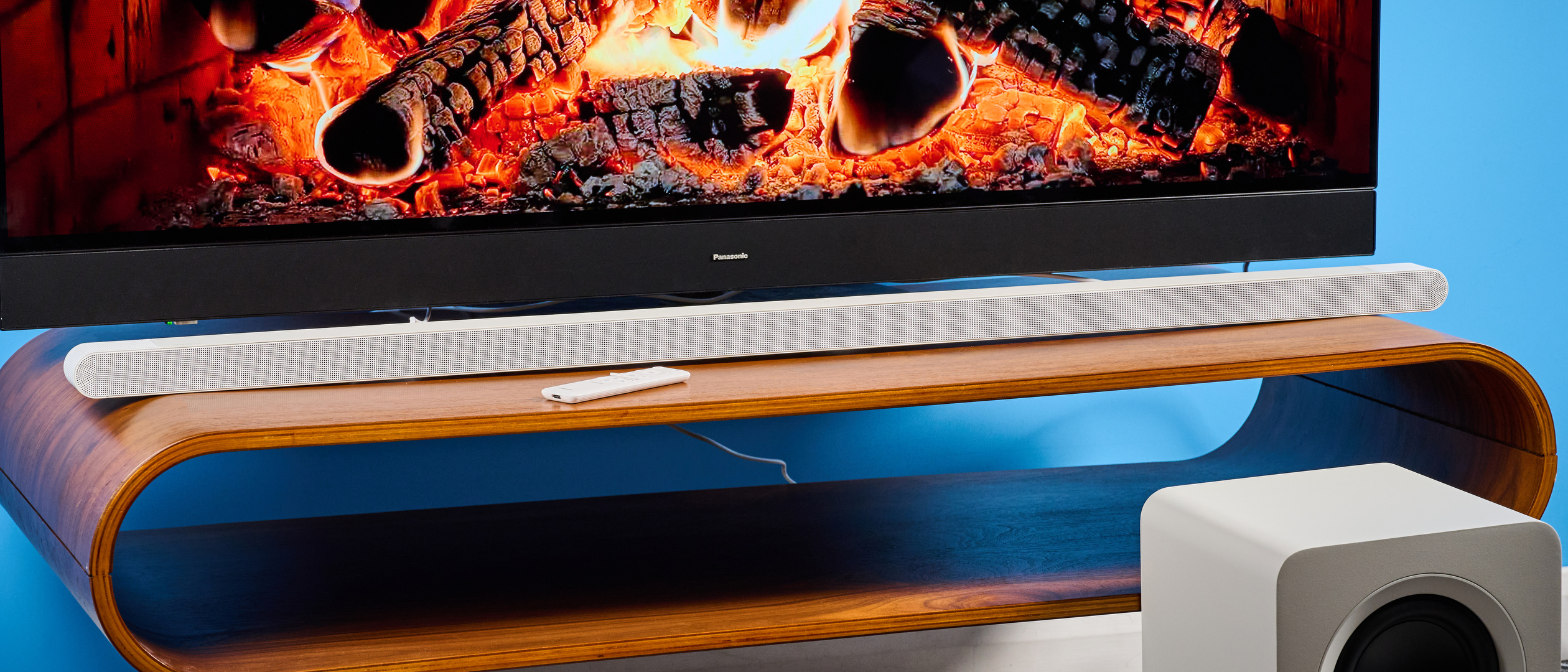Tom's Guide Verdict
In terms of baseline performance, the Samsung S801D soundbar is excellent. It sounds great for both Dolby Atmos movies and basic TV (but music is a letdown), and is very easy to control in the Smart Things app. But for an MSRP of $899, this is a very expensive soundbar for seemingly no reason.
Pros
- +
Low profile and slim soundbar
- +
Easy setup
- +
Good surround sound
- +
Easy controls in the Smart Things app
Cons
- -
Micro USB HDMI output
- -
Flagship features require a Samsung TV
- -
Overpriced
- -
Audio synchronization issues with some movies
Why you can trust Tom's Guide
The Samsung HW-S801D Ultra Slim soundbar could be one of the best soundbars if you already have a Samsung TV and are looking to expand your Samsung ecosystem. But for everyone else? I don’t think the S801D is worth it.
Let me explain — it’s just a 3.1.2 channel setup for $900, whereas you can get the 9.1.4 channel Sonos Arc Ultra for just $100 extra. One of the best-value soundbars is the Polk Signa S4, which has a 3.1.2 setup for just $399.
When you put it into perspective, I find it a little strange that the Samsung S801D is priced so highly. But if you have a Samsung TV, I still think it’s worth it. I’ll explain everything in this Samsung HW-S801D Ultra Slim Soundbar review.
Samsung S801D Ultra Slim soundbar review: Cheat sheet
- What is it? An ultra-slim soundbar and subwoofer combo
- Who is it for? Not for everyone — just people who need a slender soundbar for flush wall mounting, or people who have a Samsung TV
- What does it cost? $899 / £549
- What do we like? The sound quality is great and it looks amazing
- What don’t we like? Just a 3.1.2 channel setup for $900 feels wrong
Samsung S801D Ultra Slim soundbar review: Specs
Samsung S801D Ultra Slim soundbar review: Price & availability

The S801D Ultra Slim soundbar’s MSRP is priced at $899 on the Samsung U.S. website, but it’s often sold for around $750 on Amazon U.S.. In the U.K., it’s a much more palatable £549 on Samsung U.K..
I’m unsure why there’s such a price discrepancy between the U.S. and U.K., but in the U.K. you’re getting a much better deal. The S801D was released in 2024 in both countries, replacing the previous 2022 S800D model.

I think $899 is an extremely high price for this soundbar: for just an extra $100, you can get one of Samsung’s best soundbars, Q800D. Alternatively, you can get the Sonos Arc Ultra for an extra $100 (yes, it doesn’t come with a subwoofer, but its standalone bass is very good). Where the S801 sets itself apart is its super slim design: I’d only recommend this if you’re low on space.
Samsung S801D Ultra Slim soundbar review: Design & controls
- Super slim design
- Just 1.4 inches high and 1.5 inches deep
- Easy controls in Smart Things or remote
One of the best aspects of the S801D is the design. As it’s an Ultra Slim soundbar, it’s kind of a given that it’s just 1.4 inches high and 1.5 inches deep. This would be a perfect soundbar for compact spaces, or if you’d like to mount the soundbar flush to the wall.
Get instant access to breaking news, the hottest reviews, great deals and helpful tips.
Given the 45-inch length, this soundbar would pair best with a 65-inch TV. Any smaller than that and I think the soundbar would look a little ridiculous. The S801D looked seamless with my Panasonic MZ1500 4K OLED.

Other than being slim, the S801D looks like any other soundbar. It comes in white or black (I tested white), with grated speakers. There are buttons on top (mic, volume) and the remote feels well-made, much better than the Bose Smart Soundbar remote.
The subwoofer is pretty heavy at 14.1 pounds, but it’s easy to set up thanks to the wireless connection. I was able to control the volume via the Smart Things app and the remote control. Smart Things is actually very handy — not only can you control volume, but you can control treble, bass, and listening modes. I’ll chat about it more in the ‘App’ section below.
Samsung S801D Ultra Slim soundbar review: App
- Easy to use controls for sound modes and EQs
- Smart Things app
- Instant Bluetooth pairing from app
As you’d expect with Samsung smart home products, the S801D uses the Smart Things app. I already have this app as I have a Samsung washing machine, and I’m currently testing a Samsung vacuum. It’s actually surprisingly rewarding to see my ecosystem grow.
I love that you can name all of your products — Samsung recommends names like ‘Living Room Soundbar’ but of course you can enter anything, regardless of how silly.
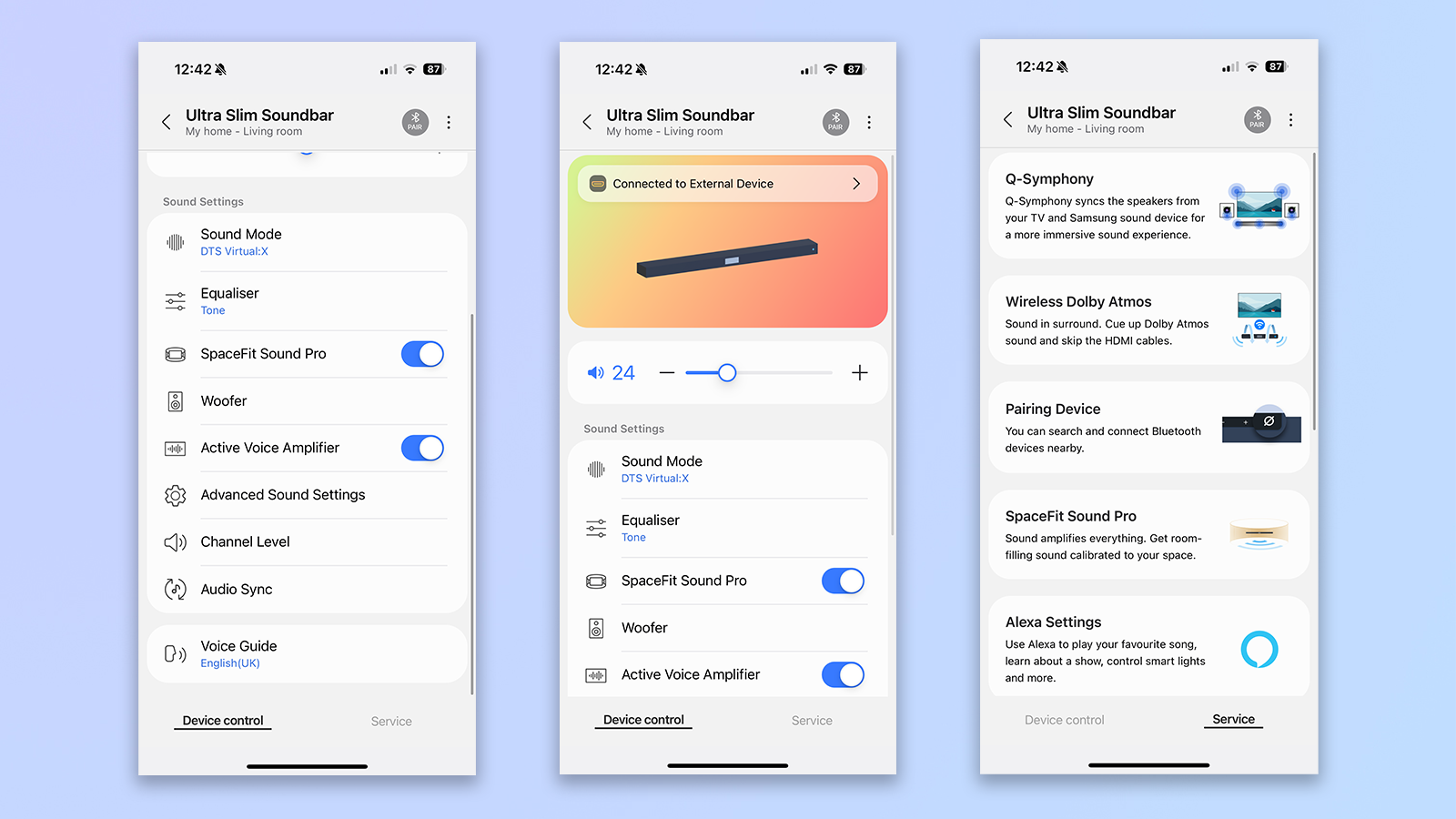
Here you can see the listening mode selection, toggles for SpaceFit Sound Pro and Active Voice Amplifier (which I couldn’t take advantage of as I didn’t have a Samsung TV), and Samsung’s explanation page for all of its features.
Connecting to Bluetooth is also super straightforward in the app — simply click ‘Pair’ in the top left corner and connect in your phone’s settings. This is one of the most straightforward smart home apps I’ve ever used.
Samsung S801D Ultra Slim soundbar review: Features
- Easy set up
- Bizarrely, a micro USB HDMI output
- Most features restricted to Samsung-branded TVs
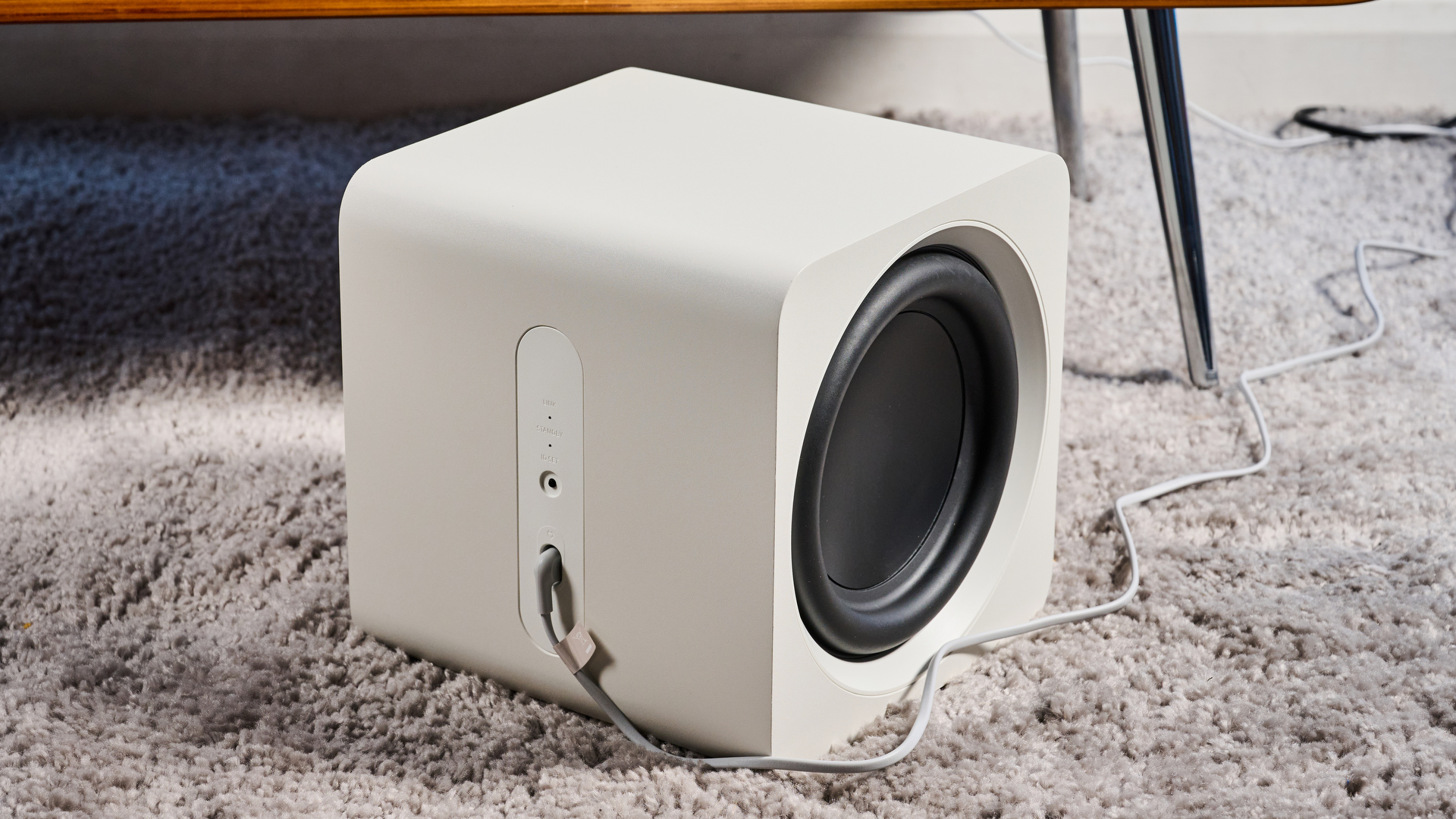
One of the most impressive upgrades from the S800D is Q-Symphony, which is improved sound room calibration. Unfortunately, this requires a Samsung TV, so I was unable to test this.
The S801D also has ‘SpaceFit Sound Pro’, which is supposed to calibrate audio based on your surroundings. Again, this is only compatible with Samsung TVs, so I couldn’t test this either.
If you’re not sensing a theme, you will be now. The S801D has wireless Dolby Atmos — but only if you have a Samsung TV, and compatible separate surrounds. I still got decent Dolby Atmos surround sound with just the soundbar and subwoofer, though, so I’d say this isn’t a major loss.

Even without access to these features, the sound quality was still great. It’s just a major shame that I couldn’t actually test any of these features. I assume they’re good, but I can’t say for certain. It’s very disappointing that Samsung restricted these flagship features to its TVs, but I can understand why, of course.
If you don’t have a Samsung TV, I’d recommend skipping this soundbar for now, and getting something a little less restricted like the Sonos Arc Ultra.
One of my main problems with the S801D is that the HDMI output is a micro-HDMI port. When I saw this, I was utterly perplexed. Why? Just why? It’s not because the soundbar is so slim, because there’s a big enough space for a proper HDMI port. This means that if you lose the original cable (or want to upgrade to an 8K cable), you have to buy another one from Samsung. There will also be quality loss.
Samsung S801D Ultra Slim soundbar review: Sound quality
- Great bass and surround sound
- Some lower frequency sounds a bit lost
- Intermittent out-of-sync issue
As with all soundbars I test, I watched a series of movies and TV shows, and listened to music. I watched ‘Top Gun: Maverick’, ‘The Wild Robot’, ‘A Complete Unknown’ on 4K UHD Blu-Ray, ‘Stranger Things’ on Netflix, and various music genres on Qobuz.
Movies
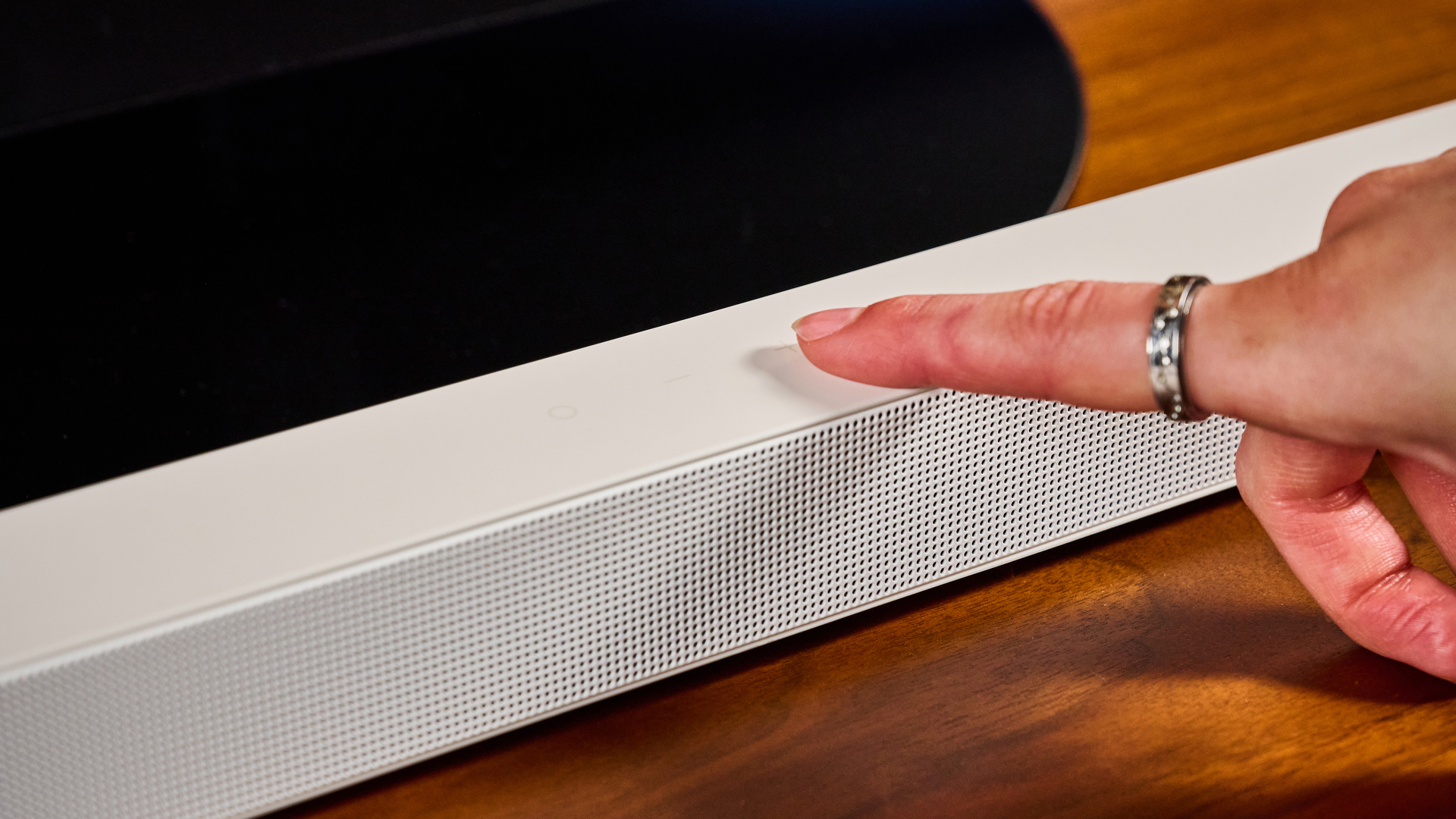
It was like the center channels and the surround channels (inside the soundbar itself) were out of sync.
First, I watched ‘Top Gun: Maverick’. It brings me great sadness to report that this movie sounded utterly terrible on the S801D. It sounded so bad that I had to make sure the soundbar wasn’t broken. I switched out the ‘Top Gun: Maverick’ DVD for ‘The Wild Robot’, and the sound was fine. Confused, for good measure I connected it up to another TV, and again, the sound was fine.
I played ‘Top Gun: Maverick’ again, and the issue persisted. It was like the center channels and the surround channels (inside the soundbar itself) were out of sync. When I turned the center channel down to volume 0, the audio sounded normal, if tinny. Then, when I returned to the original volume, the sound was again out of sync.
The soundbar was playing on the ‘Surround’ audio setting. I tried it again with the DTS Virtual X and it sounded fine. I assume there’s something in ‘Top Gun: Maverick’’s mix that the ‘Surround’ setting didn’t like — I’d recommend switching between modes to iron out sound issues.
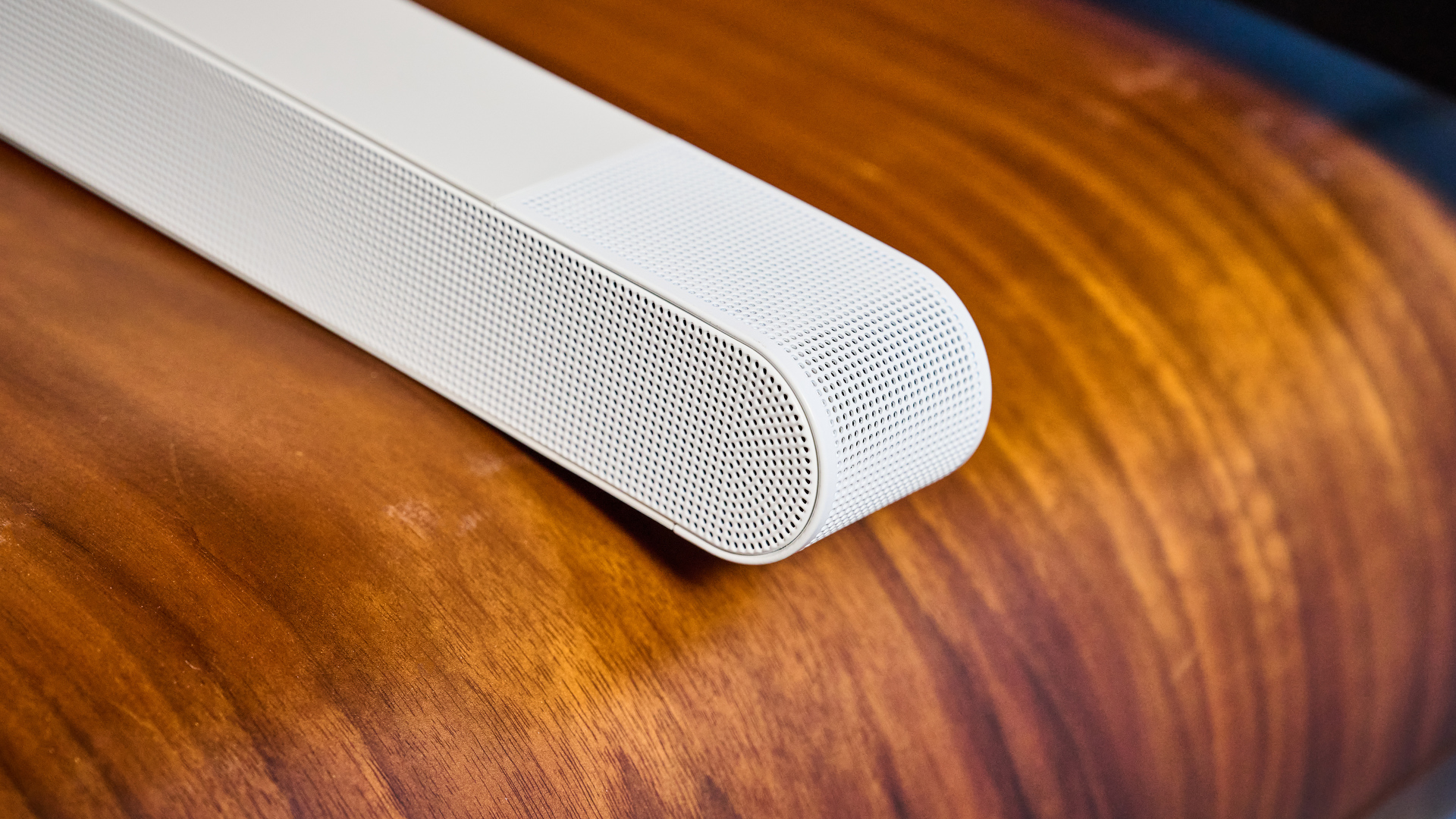
The splashing sound effects sounded as if they were coming from beside me rather than in front of me.
After the ‘Top Gun’ disaster, I played ‘The Wild Robot’. I experienced no out-of-sync audio with this movie. I cycled through the audio settings (aforementioned surround, game, standard, adaptive, DTS Virtual X). After selecting surround, the audio was immersive and rich, and I could hear all of the rustling of fur and feathers.
When the goose character was swimming, the splashing sound effects sounded as if they were coming from beside me rather than in front of me. I could hear bubbles and low-frequency water sounds perfectly in this scene.
Lastly, I watched ‘A Complete Unknown’. As this is a musical movie, I was excited to see how the S801D would be able to handle music-heavy scenes.
There’s a scene where a janitor kicks a bucket, and the sound of the bucket scraping across the floor was so loud that I jumped. It was a little incongruous in the previously relaxed soundscape, so I kept my ear out for similar moments.
In the scene where two characters converse in a diner, the cash register rings, cutlery clinks, and telephone rings were clear and immersive without overpowering the main sound.
TV
To test the TV sound, I watched ‘Stranger Things’ on Netflix. The version of Netflix I have doesn’t have Dolby Atmos, so it was a good way to evaluate the S801D’s ability to play standard, basic TV shows.
‘Stranger Things’ sounded great, with balanced, even volume across the synth-heavy soundtrack and dialogue. I could hear low-frequency sounds like leaves rustling, bike wheels whirring, and breathing.
Music

Generally, soundbars aren’t really expected to have audiophile-level sound quality. Even so, I wanted to give the S801D a fair shot.
I connected to my phone via Bluetooth (one of the easiest Bluetooth pairings I’ve ever done using the Smart Things app) and played ‘Boom Baby Bloom’ by Wolf Alice. In the DTS Virtual X sound mode, the song sounded awful — extremely tinny and small, like a deluge of tin cans raining down from the sky. I switched to ‘standard’ sound mode, and it improved, but only just.
When I listened to ‘Let It Happen’ by Tame Impala I found much of the same — incredibly tinny and weak sound. This was majorly disappointing as the soundbar had performed (mostly) well in the movie and TV tests.
I switched to ‘Surround’ and the music expanded a little, but still poor. ‘Game’ and ‘Adaptive’ sound modes didn’t do much, either. My working theory is that the Bluetooth music connection mustn't use the subwoofer, so the music is left incredibly treble-heavy, which makes it sound tinny. I could still increase or decrease the sub volume in the Smart Things app, but this only affected the sound minutely.
Samsung S801D Ultra Slim soundbar review: Verdict

There are many things to like about the S801D, but that doesn’t mean it’s free of problems. For most of the flagship features, you need a Samsung TV. It’s very expensive for what it is — 3.1.2 channel with an MSRP of $899.
Seeing as you can get the Polk Signa S4 (3.1.2 channel, and my favorite soundbar + subwoofer for value) for just $399, or spend an extra $100 for the Sonos Arc Ultra (9.1.4 channel), I just think the S801D is too expensive. On a half-price sale? Sure, it’s worth it. It sounds great and is super compact. But full price? You’re better off with something else.

Erin Bashford is a senior writer at Tom's Guide, focusing on reviews. She has a Masters in Broadcast and Digital Journalism from the University of East Anglia. As an ex-barista, she knows her way around a coffee machine, and as a music lover, she's constantly chipping away at her dream of having a multi-room home sound system. In her spare time you can find her reading, practising yoga, writing, or stressing over today’s NYT Games.
You must confirm your public display name before commenting
Please logout and then login again, you will then be prompted to enter your display name.
